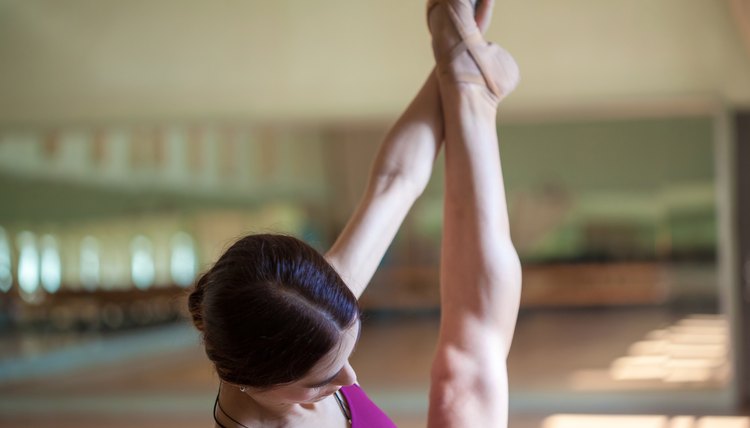The Ballerina Secret to Big Calves

The ballerina secret to strong calves is hard work. Former dancer for the New York City Ballet Mary Helen Bowers explains in an article for "The New York Times" that ballet dancers can train 10 to 12 hours a day. Yet, even without lacing up point shoes, adding calf exercises to any workout routine can help build those muscles we admire.
Anatomy
The calf muscle group consists of the gastrocnemius, the visible bulge at the back of the lower leg, and the soleus, which lies beneath it. Together, they function to lift the heel off the ground, allowing the dancer to stand on the balls of the feet, a position called demi-pointe in ballet, or to balance on the toes in point shoes. This muscle group also generates force for jumps and supports landings.
Strengthening
Releves -- commonly known as heel lifts or calf raises -- strengthen the calves according to Megan Richardson, who works with the Harkness Center for Dance Injuries, in an article for "Pointe Magazine." Stand on the bottom step of your stairs with your heels hanging over the edge. Raise onto your toes and slowly lower one heel until it dips below the edge of the step. Raise back up and then repeat on the other side. Continue your releves until fatigued. Principal dancer Maximo Califano offers another variation. Place both hands, higher than shoulder height against a wall. Walk your feet back until both heels can still comfortably rest on the floor. Raise both heels off the floor at the same time until you're on your toes. Release your heels back to the floor. Repeat until fatigued.
Workouts
The New York City Ballet offers a workout DVD designed to help viewers learn how to stretch and strengthen the hips, abdominals and legs, including the calves. A study of the effects of supplemental weight-training for ballet dancers, published in the Journal of Strength & Conditioning Research in 1990, demonstrated that weight-training can provide significant improvements in strength, endurance and power. Try standing or seated calf raises using ankle weights at home or a machine at the gym.
Cautions
Secrets often come with a price. Ballet places a high demand on the calves as well as the Achilles tendon, where the gastrocnemius and soleus connect to enable foot flexion. Overuse can cause pain, tightness and swelling, resulting from muscle or tendon strain.
References
Writer Bio
Cara Murray started writing professionally in 2002. Her essays have been featured on WRNI, Rhode Island's National Public Radio affiliate. Murray holds a Bachelor of Arts in psychology from Brown University and a Master of Arts in environmental policy from the University of Rhode Island.
